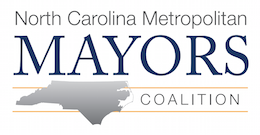Public-Transit Passengers Face Rough Ride (Wall Street Journal)
Agencies Nationwide Raise Fares, Cut Service as Budget Pressures Mount; In Chicago, ‘Less Frequent, More Crowded Service’
Public transportation will be more crowded and more expensive this year as big-city transit systems across the country respond to severe budget pressures.
Funding from state and local governments — a key part of budgets for transit systems — has been cut and ridership is down overall, prompting transit officials to trim service and raise fares at a time when many customers are pinched themselves.
San Francisco is raising fares for commuters this month. Chicago will lay off workers and eliminate bus routes in February to avoid fare increases. New York City is planning to wind down free and reduced-cost student fares starting in September. And Washington, D.C., is proposing to decrease the frequency of trains.
“This is the first time that I can remember [budget shortfalls] being so widespread,” said William Millar, president of the American Public Transportation Association. “Even in a recession there’s usually some part of the country that’s doing pretty well…that was not the case this time around.”
Mass-transit ridership held up well in the recessionary year of 2008, rising 4%. But ridership has been down in 2009. In the third quarter, it was 6.1% below the levels of a year earlier; for the first three quarters of 2009 combined, it was down 3.8%. The cost of riding public transit rose at a 17.8% annual rate in the six months ended in November, the Bureau of Labor Statistics reported. Overall consumer prices were up at a 4.2% rate in the same period.
In San Francisco, the Municipal Transportation Agency, the Bay area’s largest transit system, faced a $129 million deficit that emerged in the spring of 2009 for the fiscal year that ends June 30, 2010. Revenue from the city’s general fund, which helps subsidize the agency, was down and the state of California diverted about $60 million in funding that had been slated for the transit agency.
To make up the difference, some routes were cut, more than 100 workers are scheduled to be laid off and fares are rising. The price of a monthly pass for the San Francisco system and Bay Area Rapid Transit, which serves the city and surrounding towns, rises 27% to $70 from $55 this month. For those who ride only inside the city, the fare goes to $60 from $55. Despite those changes, an additional $20 million to $25 million budget gap has emerged.
“While the down economy is hurting individual pocketbooks, it’s also making it harder for government agencies to make ends meet,” said Judson True, a spokesman for the San Francisco system. State and local tax revenues in the third quarter of 2009 were 7% below year-ago levels, according to the Census Bureau.
About $8.4 billion of the $787 billion federal stimulus package was dedicated to mass transit. That helped delay some of the pain, transit agencies say, but wasn’t sufficient to prevent it.
Chicago Transit Authority ridership was down 0.8% through November compared with the same period in 2008, reducing revenue at the same time that tax revenues that help fund the system were declining. With a $300 million budget gap to close in 2010, the transit authority proposed a fare increase in October, but then backed off in a deal with the governor. The state made up a portion of the funding, and the authority left fares alone.
“I think the reasoning was that in this economy it will be harder for people to be paying more,” said Noelle Gaffney, a spokeswoman for Chicago Transit. “No one wants to see service reductions either, but that may be something you’re able to work around more than a fare increase.”
To save money, Chicago Transit is furloughing nonunion employees, laying off about 1,000 union workers in February, terminating nine express bus routes and adjusting the frequency of trains and other buses. “Every place that has service today will still have service, but it will be a less frequent, more crowded service,” Ms. Gaffney said.
Cutting services and raising fares can make mass transit less attractive, and prompt commuters to turn to cars, bicycles or walking. In Chicago, the transit agency projected a 10% drop in ridership if it had gone through with plans to both raise fares and cut service.
In cities where many residents don’t own cars, as in New York, public transit cuts are always politically controversial. To close a budget gap of $383 million — the result of cuts in state funding and falling tax revenues — New York’s Metropolitan Transportation Authority approved a budget that would eliminate free and reduced fares for students by September 2011. That decision isn’t final.
“There is a pretty tremendous outcry here in New York,” said Kate Slevin, executive director of the Tri-State Transportation Campaign, a nonprofit transit watchdog group. “The people that are being hurt are the teenagers and high school students. It’s not the people you want to punish for the financial crisis.”
Write to Sara Murray at sara.murray@wsj.com
By SARA MURRAY


